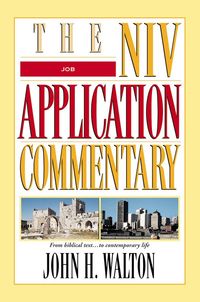AUTHOR: Ravi Zacharias
PUBLISHER: New York, NY: Faithwords, 2012, (288 pages).
This is another book on the battle of worldviews.The popular speaker and an exponent in Christian apologetics turns his attention on an increasingly pluralistic culture, where everything from Oprah to Chopra is uncritically accepted by the world at large. Providing a critical eye and supported by historical background and research, Zacharias aims to bring back the reality of Jesus in an "age of mass marketed spirituality." It is the author's concern that not only are people no longer critical of the fake, they are dangerously embracing them as "truth." For Zacharias, truth needs to affirm two sets of combinations together:
- Truth with Relevance
- Reason and Faith.
Right from the start, Zacharias makes his case by asking readers to probe whether their form of spirituality is fake "movie-making" or true "soul making." He makes this sharp critique: "Giving yourself the privilege of destroying other positions while parking your own position in an unidentifiable location is a form of linguistic terrorism." (14) He then points out the three ways in which the West was lost.
- Disillusionment with materialism
- Shallowness, and sometimes hypocrisy of the Church
- Free from all kinds of restraint, especially sexual matters.
"Behind the popularizers like Chopra are the real metaphysicians of the soul." (113)
Even Buddhism is mentioned, where the danger is the temptation to want to "become" the Absolute rather than to worship the Absolute. Zacharias highlights the three strands over and over again, that a spiritual search for a belief system needs "relationship, stewardship, and worship." On pain, Zacharias shines in defending the Christian faith, and argues actively that the moment we reject Christ, we are also rejecting the Word, the Son, and the Truth. On Jesus, Zacharias also warns readers against distorting Christ to make Christ a non-sufferer, or nonjudgmental. He even critiques authors like Butler-Bolden, who though they market their writings as something neutral, they somehow cast a negative light when it comes to Christianity.
Zacharias is also fair to admit some of the failings of the Church, especially the accusation that churches tend to be "country clubs for nice people." He reserves 5 criticisms for Christians to take note.
- Christians tend to be nice only to some
- Christians have forgotten the spiritual practices of devotion
- Christians have institutionalized Christianity
- Christians have failed to grapple with pain and suffering sufficiently
- Christians tend to be judgmental.
- "How do they answer the question of exclusivity as it relates to their own belief?"
- "What is the source of their authority?"
- "How relevant is what they believe to the common experience; what difference does it really make?"
My Thoughts
I applaud Ravi Zacharias for his honest convictions and passionate arguments. He thinks clear. He criticizes without fear. Most of all, he has shown us the way to be more critical with the worldly philosophies and values that sometimes we accept without asking appropriate questions. After all, if our souls are more important, should we not be more cautious about what we are accepting? At the same time, are we practicing double standards when we criticize Christianity fiercely, but fail to apply the same to non-Christian beliefs? This book is valuable for the background information that gives us an idea of how popular spiritualists like Ram Dass, Eckhart Tolle, Deepak Chopra, and other mysterious spiritualities are formed. There are many reasons for disillusionment with Christianity. Yet, there are no easy substitute for the vacuum left behind by the Church in this marketplace of religious ideas, in a pluralistic society. The danger for anyone is two-fold. Firstly, one can become so overly critical of the Church, that they close their eyes on all the good that the Church is doing, or has done. This leads to myopic understanding of the goodness of Christ. Secondly, one can become so all-accepting that by accepting everything, they end up with nothing.
If I have a critique of this book, it will be that Zacharias can be easily accused of being too harsh on Deepak Chopra. It will look as if he has a personal vendetta against the world renowned spiritualist. Looking at the big picture, that is not Zacharias's main concern. His main concern is truth, and Chopra is an example of how some modern spiritual philosophies are dangerous not because they want to market truth, but because whether knowingly or unknowingly, they are masking truth.
Zacharias has given us a valuable tool to engage the culture and so questions to help sieve out truth in a marketplace of ideas. Why should anyone read this book? Let me suggest three reasons. If you are concerned about truth; if you are concerned about distinguishing falsehood from reality; if you are concerned about soul making, this book is a must read.
Ratin: 4.25 stars of 5
conrade
This book is provided to me free by FaithWords Publisher, a division of the Hachette Book Group without any obligation for a positive review. All opinions offered above are mine unless otherwise stated or implied.














